Junior Explorer Geologist
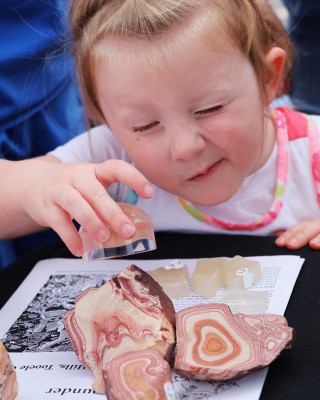
One thing about living on a planet called ‘Earth’, is that earth is everywhere. It’s beneath our feet, in our mountains, and at the bottom of our lakes. It would be impossible to imagine our lives without it. While we think of earth, or the rocks and minerals that make it up, as being constant and unchanging, it actually is always on the move. It just may be that, with the exception of Earthquakes, that the earth around us is moving too slowly for us to notice. Yet, despite that, the evidence of the earth changing can be found everywhere and people who research and try to understand these changes are called geologists. If you have ever wondered where mountain’s came from, or how large boulders appeared in flat fields, or why rocks are different colors, than you could be a geologist.
Careers—Be a Scientist!
A geologist studies the formation and placement of rocks and minerals in our earth. They study the clues left behind after billions of years of shifts in the earth to understand what the past earth looked like, and to better understand the current geologic processes going on today. Utah has many beautiful and interesting rocks and formations, and if you are interested in them maybe you are interested in being a geologist! Why not get started by being a Junior Explorer Geologist!
Learn
Utah is the perfect place to study Geology. With its alpine mountains along the Wasatch front, iconic red rocks in the south and west of the state, and salty Great Basin to the east; it has a plethora of geographic environments to explore. The great thing about being a geologist is that there is geology all around you. You’re literally standing on it! Take a moment to learn about the geology of where you live. What geologic formations is your town built on or near?
Once you know about where you live, we can start exploring places of special geological interest in Utah. King’s Peak in Duchesne County is the tallest mountain in Utah at 13,528 feet. You may have heard of Arches National Park, but did you know that there are 2000 arches in the Park.
Be on the lookout, or feelout, for earthquakes too! The Wasatch Fault lurks beneath the state and is responsible for many earthquakes and tremors we have felt.
Learn more about earthquakes and have a little geology fun by watching the video below.
Leer el libro de cocina en español.
Explore
Now that you’re ready to be a geologist, it's time to go outside and do what any good Explorer Corps member does; explore! Visit the national parks, the markers and other geologic locations. One way people enjoy exploring Utah is through rock climbing. Utah is home to some of the best rock climbing in the world. Just look up and you are sure to see a climber on those rock walls. Meet father and son rock climbers Jason and Noah Stevens as they share their passion for Sanpete County's Maple Canyon. You don’t have to be a rock climber though to appreciate the beauty and science of Utah’s rich geology.
Get out on the road! Every county in Utah has a unique marker representing Utah’s natural history. Download your passport and start exploring geology themed Marker Locations by county:
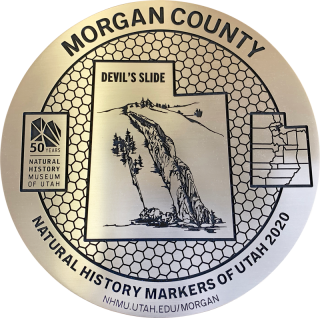
Devil’s Slide
Utah boasts so many natural wonders that it’s easy to drive right by them and not even know that they’re there. But if you’re driving along I-84 in Morgan County, keep your eyes open in the vicinity of Powder Hollow. There, off the side of the road, is a geologic marvel called Devil’s Slide.
The rock layers that make up the Devil’s Slide are primarily made up of what Utah geologists know as the Twin Creek Limestone. These rocks formed about 165 million years ago, about 10 million years before the time of dinosaurs like Allosaurus and Stegosaurus. At the time, what’s now Morgan County was underwater, part of a shallow sea that was teeming with marine life. The limestone that formed in that seaway was eventually buried.
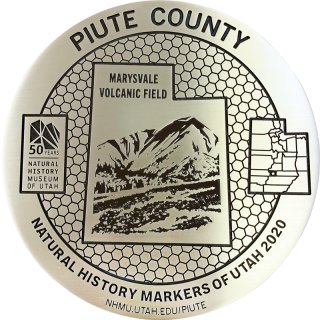
Marysvale Volcanic Field
Some of Utah’s geologic wonders are so immense that they’re difficult to see. Marysvale Volcanic Field in Piute County is one such place. Spread around 3,000 square miles, the rocks of this seemingly inconspicuous spot record a trio of megalandslides triggered by the weight of intense volcanic activity.
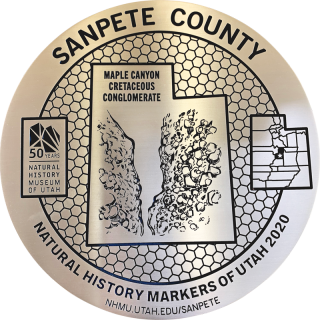
Maple Canyon Cretaceous Conglomerate
Utah’s rocks come in many forms. There are boulders and sand grains, hoodoos and ledges, sandstone and basalts, an entire litany of geologic particulars on display throughout the state. And one of the most unique places in Utah is where geology meets outdoor adventure, in Sanpete County’s Maple Canyon Cretaceous Conglomerate.
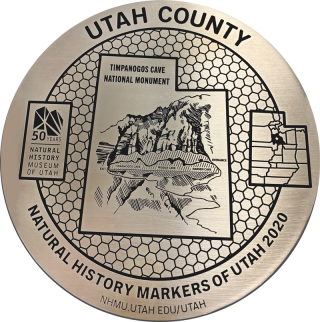
Timpanogos Cave
At a glance, helictites seem like they don’t pay any heed to the rules of gravity. These cave-formed minerals often seem to grow sideways, or at angles different from vertical, different from other cave formations that are oriented directly up or down. The way water moves through narrow spaces has allowed these cave minerals to take on unexpected shapes, and Timpanogos Cave is home to one of the largest collections of helictites in the world.
Level Up!
You are now trained as a Junior Explorer! Now, check out our other Junior Explorer specialties to spark your curiosity in other natural sciences.